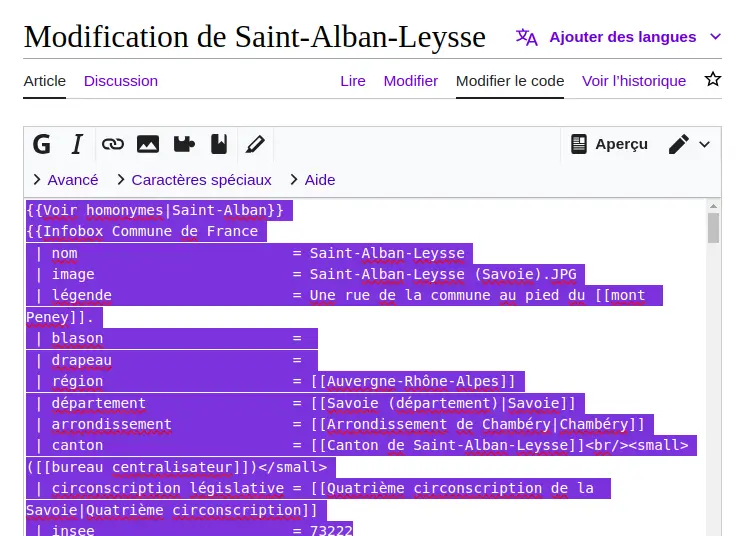Would you like to completely delete a page on Wikipedia? Whatever your reasons, I’ll explain what you can and can’t do. Based on the rules in force on Wikipedia, and my experience as a contributor for over 10 years.
Plan
Who Can Delete a Wikipedia Page?
🚨 Only Wikipedia administrators can delete a page.
They are elected by the community and have technical rights superior to those of ordinary contributors. However, admnistrators have no more editorial power: it’s not up to them to decide for or against deletion.
They simply apply the rules in force on Wikipedia and carry out the deletion technically, following reports by any other person, even non-administrators.
There are around a hundred administrators on Wikipedia in French.
💡 However, anyone can “whitewash” a page. This means deleting all its content, without actually deleting the page. There are very strict conditions to be met to do this, and robots and humans to check that it’s done properly. You can see a list of the most recently whitewashed pages here.
When Can I Delete a Page?
Wikipedia lists the criteria [here] for requesting immediate deletion of a page, or for clearing its content. They are summarized below.
- Content completely aberrant in form or content
- Non-encyclopaedic, draft-like page
- Vandalism, blatant hoax
- Bringing a deleted page back online without going through a page restoration process
- Creation by a blocked/banned account that has bypassed the block
- Deletion at the request of the page author, if he/she is the only contributor on the page
- Page whose sole purpose is to defame, threaten, intimidate or harass
- Overly promotional or advertising tone
- Copyright infringement: copying and pasting content that already exists elsewhere
🚨 The fact that you are the person concerned by the page, as a natural or legal person, does not give you any more rights over your page. You can’t ask to have your page removed “simply” because you’d rather not have a page, or because you feel the content does you a disservice. Your request will be rejected.
If you feel that a page does not meet the criteria of sufficient notoriety to exist, you must then launch an admissibility debate. Only once the debate has reached a consensus, after a maximum of one year, can the page be deleted, if the debate concludes that it is insufficiently well-known.
Some people go to court over a problem they’ve encountered on Wikipedia.
✍️Need help making edits on Wikipedia?
We can answer your questions for free via email, or you can hire our services for personalized support on the encyclopedia. Take advantage of our 12+ years of experience on Wikipedia!
How Do I Delete the Page?
If you’re not an administrator, you can simply whiten the page.
- Go to the
- Top right click on Modify code
- Select all content that appears in the text box and delete it.
- Add only the following text to the {{Request Immediate Deletion}} text box
- In addition, justify in 1 or 2 sentences how the deletion meets the criteria for immediate deletion in the “cleared because …” edit summary box.
- Click on Publish changes
- Let the person who originally created the page know that you’ve cleared it, by leaving a message on their talk page. Find them by going back through the publication history.
A Wikipedia administrator will be notified and will check whether the whitewashing is justified. If so, he or she will delete the page. If not, he or she will restore the draft.

Can I Delete Only Certain Parts of an Article?
You want to delete a page, but find that you can’t? It is, however, possible to edit the page. You can’t delete information just because you don’t like it.
I am regularly contacted by people who wish to remove passages from their page, particularly in the “Reviews” or “Controversies” sections. Sometimes because they feel the comments border on defamation.
💡 In general, it’s not possible to delete these passages if they are well supported by secondary sources, but it is possible to add information to expose another point of view. However, this point of view must be expressed in secondary sources, i.e. in media external to the person in question. For example, it can’t simply come from a press release you’ve posted on your site.
It is sometimes possible to shorten these sections if they take up a disproportionate amount of space in relation to the subject of the article.
I hope you’ve found this article useful! If you have any questions, you can leave them as a comment – I always answer everyone that way.
If you’d like me to accompany you on Wikipedia, please contact me for a quote.
Good contributions 🙂 !

Written by Albin Guillaud
A Wikipedia contributor since 2014, with Wikiconsult I support businesses, institutions, public figures, and agencies looking to create, update, or monitor their presence on Wikipedia.